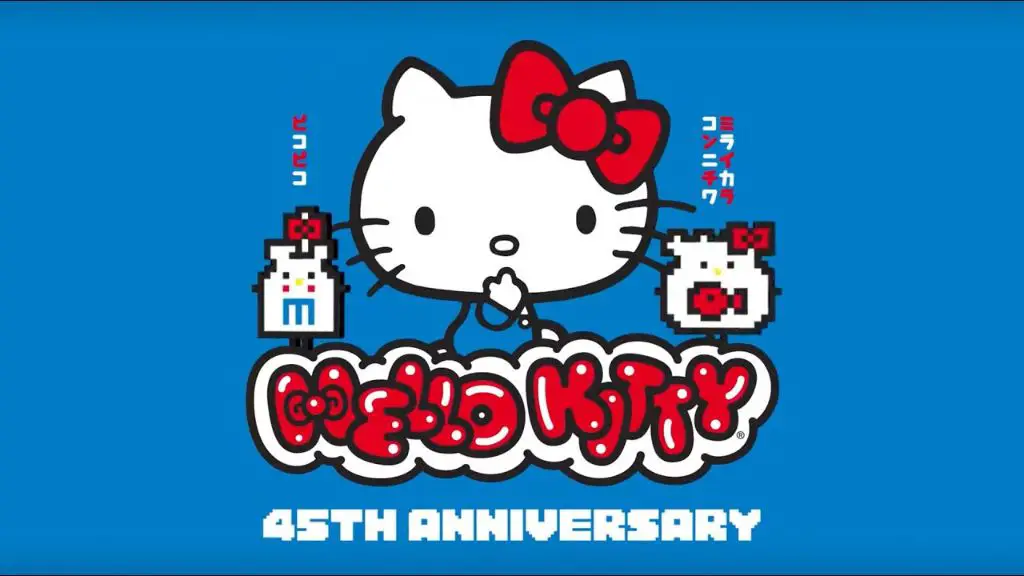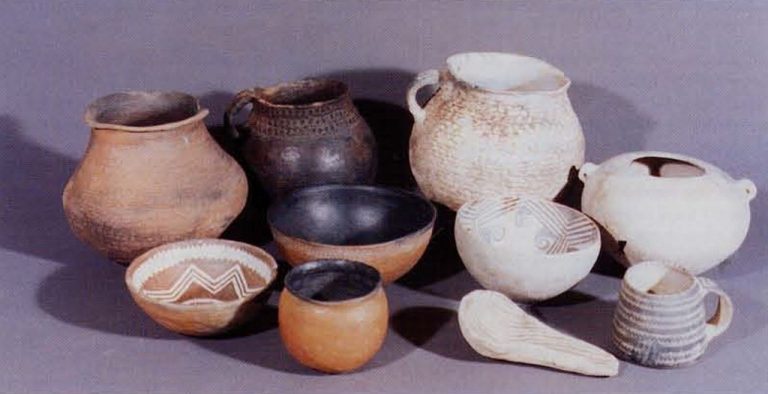How Old Is Hello Kitty 2024?
Introducing Hello Kitty
Hello Kitty was created in 1974 by Yuko Shimizu, a Japanese artist working for the company Sanrio. She was designed to appeal to pre-adolescent girls as part of Sanrio’s merchandising push to expand beyond stationery and gift items. According to Sanrio, Hello Kitty was born in London, England on November 1st and her real name is Kitty White.
The original Hello Kitty product was a vinyl coin purse released in Japan in 1975. The simple design of a cartoon white cat with a red bow appealed to young girls. Hello Kitty did not have a mouth, allowing girls to project their own feelings onto the character.
Hello Kitty was marketed as the quintessential little girl’s dream friend – cute, kind, and playful. She was part of Sanrio’s kawaii culture of introducing whimsical and adorable characters into everyday products. Hello Kitty stood out with her simple design and eventually grew into a global phenomenon.
https://www.vox.com/2014/8/28/6081109/hello-kitty-facts-weird
Hello Kitty’s Official Birthday
Hello Kitty’s official birthday is celebrated every year on November 1st, as declared by Sanrio, her creator. According to the official Sanrio website, “Hello Kitty’s birthday is celebrated on November 1st and this year, it is officially named Hello Kitty Day. The milestone kicks off a month-long celebration of kindness, friendship and community.” [1]
The date of November 1st was strategically chosen by Sanrio to align with Hello Kitty’s astrological sign of Scorpio. Scorpios are known for being passionate, loyal, resourceful, observant, and dynamic. These qualities fit well with Hello Kitty’s cute but strong personality. Hello Kitty embodies the Scorpio traits of independence, cleverness, and a playful spirit mixed with an underlying emotional intensity. So her official birthday being in tune with her zodiac sign adds meaning and depth to her character.
Hello Kitty’s Age in 2024
Hello Kitty was first introduced on November 1, 1974 by the Japanese company Sanrio. As stated on Sanrio’s official website announcing Hello Kitty’s 50th anniversary celebrations starting in 2023, her official birthday is November 1st (source). This means that in 2024, the year Hello Kitty turns 50, her official age will be 50 as well, since she was “born” in 1974.
However, it’s important to note that Hello Kitty is an anthropomorphic cartoon cat, so she does not actually age like a human being. Her design and character have remained frozen in time over the past 50 years to maintain her youthful look and appeal to new generations of fans. So while 2024 will mark the 50th anniversary of Hello Kitty’s official “birth” and her age will technically be 50, she still retains the same eternally young appearance and personality she was created with in 1974.
Hello Kitty Milestones
Hello Kitty was created in 1974 by Sanrio designer Yuko Shimizu. Her original name was Kitty White and she was designed based on a cartoon cat manga character. The following year in 1975, Hello Kitty made her public debut on a vinyl coin purse in Japan. This marked the beginning of Hello Kitty as an international icon and brand.

Some key milestones in Hello Kitty’s history include:
- 1976 – Hello Kitty was first marketed outside of Japan, in the United States.
- 1983 – The first Hello Kitty animated series debuted.
- 1993 – Hello Kitty is featured on her own branded airplane for Taiwan’s EVA Air.
- 1999 – Sanrio and Hello Kitty opened the first Sanrio store in Hawaii.
- 2002 – Hello Kitty becomes McDonald’s main promotion for their Happy Meal in Asia, creating massive demand.
- 2007 – Hello Kitty Ringo mobile phone launched by Sanrio and SoftBank Mobile.
- 2008 – Hello Kitty appears at the Macy’s Thanksgiving Day Parade in New York.
- 2014 – Celebrations held worldwide for Hello Kitty’s 40th anniversary (source)
- 2019 – Hello Kitty Cafe opens its first East Coast location in Washington D.C.
Over the decades, Hello Kitty has partnered with major brands like Sephora, Vans, UGG, and Build-A-Bear for specialty products and activations. She has expanded far beyond her initial vinyl coin purse to become a global lifestyle brand with her image on everything from apparel and accessories to home goods and electronics.
Hello Kitty Popularity Over the Years
Hello Kitty first debuted in 1974 and quickly gained popularity in Japan. By the late 1970s, Hello Kitty had reached icon status in Japan, appearing on a variety of products from stationery to apparel (Wikipedia). However, it wasn’t until the 1990s that Hello Kitty became a global phenomenon.
According to Sanrio, Hello Kitty was appearing on 12,000 new products each year by 1999 (Wikipedia). Her image could be found on everything from toys, games, and animated series to bras and jewelry. By the early 2000s, Hello Kitty had firmly established her brand worldwide.
Hello Kitty’s popularity peaked in the late 2000s, when she was visible everywhere in pop culture. However, as the character became oversaturated, Hello Kitty merchandise sales started to decline. By 2014, the Hello Kitty brand was no longer as dominant and profitable for Sanrio as it once was (The Science Survey).
While not as ubiquitous as she once was, Hello Kitty remains an iconic and instantly recognizable character worldwide. Her image still appears on a wide variety of products, appealing to fans young and old.
Hello Kitty Brand Value
Hello Kitty is one of the most successful media franchises in the world. According to Statista, the Hello Kitty brand was worth an estimated $84.5 billion as of 2021 (1). This makes Hello Kitty the second most valuable media franchise globally, behind only Disney.
The huge brand value stems from Hello Kitty’s staying power and appeal across generations since her creation in 1974. Over the decades, Hello Kitty has adorned everything from apparel to accessories, home furnishings, toys, electronics, and more. According to the New York Times, Hello Kitty was generating $5 billion per year in sales globally already by 2010 (2).
As of 2024, it’s estimated that the Hello Kitty brand is likely worth over $90 billion. Despite some fluctuations, the overall growth trajectory of the brand remains positive. Hello Kitty continues to have multi-generational appeal globally, especially in Asian markets. With strategic partnerships and expansion into areas like gaming and digital experiences, Hello Kitty’s brand value is likely to keep increasing in the years ahead.
Hello Kitty Products
Hello Kitty’s popularity has spawned a vast array of licensed products over the decades. According to Super Delivery, there are over 50,000 different Hello Kitty products available. Some of the most popular product categories include:
– Stationery – Pens, pencils, notebooks, stickers, bookmarks, and more. Stationery has been a core part of the Hello Kitty brand since the beginning.
– Apparel – T-shirts, hats, bags, purses, clothing accessories featuring Hello Kitty designs.
– Toys – Plush dolls, figurines, playsets, and other toys for children and collectors.
– Home goods – Kitchenware, appliances, furniture, linens, and decor showcasing Hello Kitty’s iconic image.
– Electronics – Cell phone cases and accessories, headphones, speakers, and more tech items with Hello Kitty themes.
– Health and beauty – Makeup, skin care, hair accessories, and bath/spa items with the Hello Kitty branding.
In addition to licensed products, Sanrio creates and sells official Hello Kitty merchandise through outlets like the EnSky online shop. The extensive variety of licensed and official merchandise illustrates the incredible reach of Hello Kitty’s appeal and cultural influence.
Hello Kitty Controversies
Despite her widespread popularity, Hello Kitty has not been without controversies over the years. In 1999, there was some backlash when it was revealed that Hello Kitty was not a cat, but actually a little girl. Her creators clarified that she was a human character who owned a pet cat named Charmmy Kitty. Some fans felt misled by the branding.
There have also been ongoing debates about whether Hello Kitty promotes overly feminine or childish values, especially in Japan where some view her as infantilizing Japanese popular culture. As described in the book medi@sia: Global Media/tion In and Out of Context, “Certainly, these critiques are a means for some people to distance themselves from the meanings given this mouthless cat.”
Additionally, some have argued that Hello Kitty embodies problematic gender roles. Critics say that the character promotes a narrow version of girlhood focused on cuteness and passivity rather than strength. However, Hello Kitty’s creators have aimed to evolve her over the years to reflect changing values.
The Future of Hello Kitty
As one of the most iconic and recognizable characters in the world, the future of Hello Kitty looks bright. Sanrio, the company behind Hello Kitty, continues to find new and creative ways to keep the character relevant. Some predictions for Hello Kitty’s future include:
Continued expansion into new products and collaborations – Sanrio will likely continue partnering Hello Kitty with fashion brands, restaurants, theme parks, and other companies to develop unique licensed products.
Increased focus on digital content and social media – Hello Kitty already has a large presence online, and this will likely grow as Sanrio creates more animated series, games, apps, and viral social campaigns.
Appealing to new generations of fans – By reinventing Hello Kitty to stay modern and on-trend, Sanrio hopes to gain fans from younger demographics while retaining longtime enthusiasts.
Further global expansion – Hello Kitty is already big in Asia and the U.S., but will aim to increase popularity in emerging markets, especially in Latin America and Africa.
According to analysts, the outlook for Hello Kitty remains strong. Her familiar face and appealing design should continue charming fans young and old for decades to come. While fads come and go, Hello Kitty’s nostalgic and kawaii-inspired aesthetic seems unlikely to fade from popularity any time soon.
Hello Kitty’s Lasting Appeal
Hello Kitty has remained one of the most popular global brands for decades thanks to her timeless design and universal appeal. Though created in 1974, her simple design and personality allow her to stay relevant to new generations of fans (The Aggie). Hello Kitty is popular globally because she represents happiness, friendship, and positivity – themes and values that resonate across cultures and age groups. As a fictional character not bound by time, Hello Kitty stays evergreen while adapting her image and products to current trends.
Another key aspect of Hello Kitty’s popularity is brand management by Sanrio that keeps her relevant but retains brand integrity. Hello Kitty has expanded into lifestyle categories like fashion and homewares while collaborating with high-profile brands, allowing her to stay fresh and connect with new demographics. At the same time, strict brand guidelines on how Hello Kitty is depicted and isolation from overly adult themes helps her maintain a timeless, youthful image (The Science Survey). Hello Kitty has walked the fine line of evolving with the times while staying true to her identity for over 40 years.
While other franchises and characters may peak and fade, Hello Kitty has enduring, global appeal. Simple and cute, but not overly childish, she represents positivity and friendship in a way that allows fans to stay loyal from childhood into adulthood. Careful brand management and character integrity have allowed Hello Kitty to remain a pop culture icon since the 1970s.




